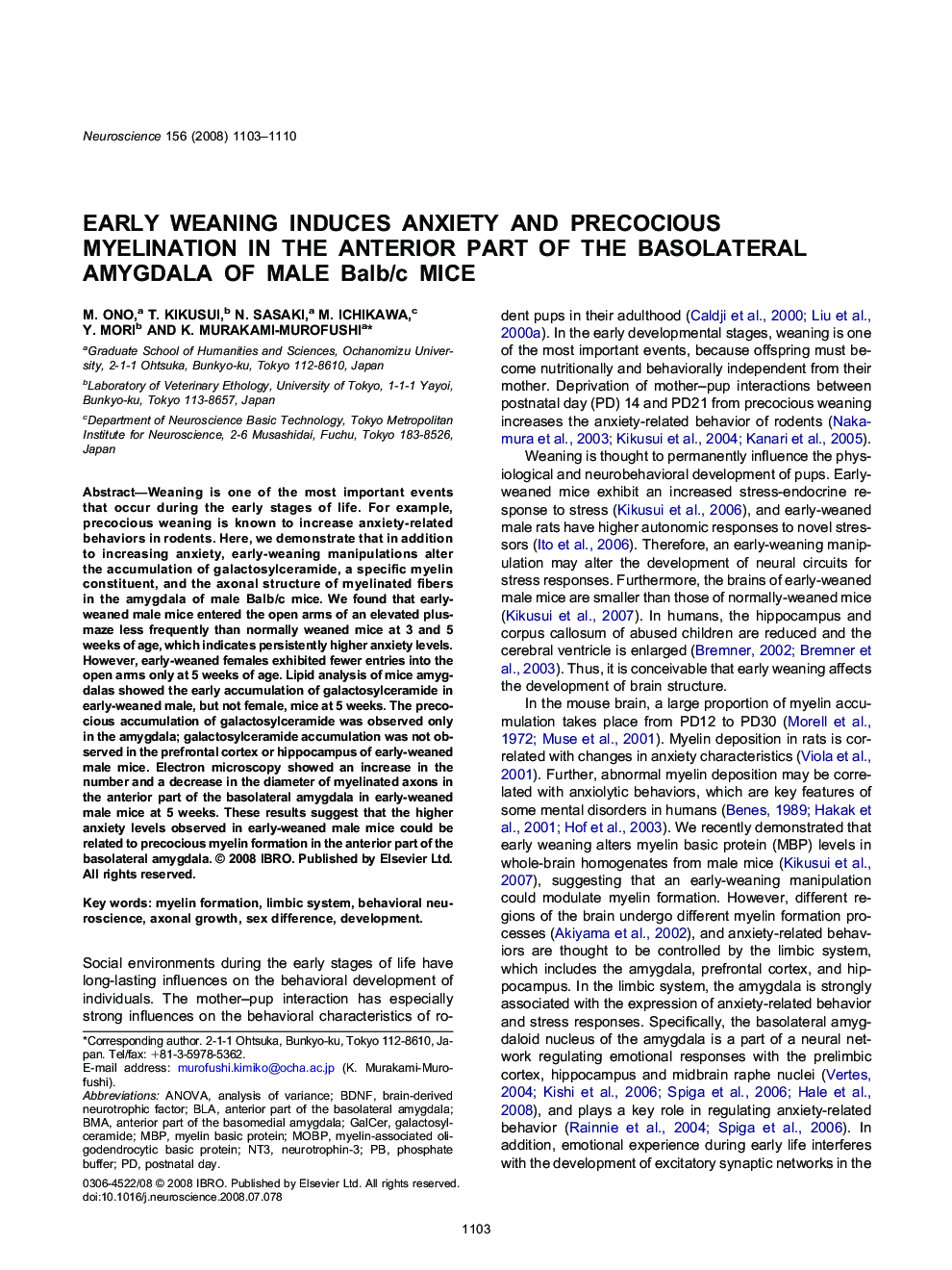| Article ID | Journal | Published Year | Pages | File Type |
|---|---|---|---|---|
| 4341376 | Neuroscience | 2008 | 8 Pages |
Weaning is one of the most important events that occur during the early stages of life. For example, precocious weaning is known to increase anxiety-related behaviors in rodents. Here, we demonstrate that in addition to increasing anxiety, early-weaning manipulations alter the accumulation of galactosylceramide, a specific myelin constituent, and the axonal structure of myelinated fibers in the amygdala of male Balb/c mice. We found that early-weaned male mice entered the open arms of an elevated plus-maze less frequently than normally weaned mice at 3 and 5 weeks of age, which indicates persistently higher anxiety levels. However, early-weaned females exhibited fewer entries into the open arms only at 5 weeks of age. Lipid analysis of mice amygdalas showed the early accumulation of galactosylceramide in early-weaned male, but not female, mice at 5 weeks. The precocious accumulation of galactosylceramide was observed only in the amygdala; galactosylceramide accumulation was not observed in the prefrontal cortex or hippocampus of early-weaned male mice. Electron microscopy showed an increase in the number and a decrease in the diameter of myelinated axons in the anterior part of the basolateral amygdala in early-weaned male mice at 5 weeks. These results suggest that the higher anxiety levels observed in early-weaned male mice could be related to precocious myelin formation in the anterior part of the basolateral amygdala.
